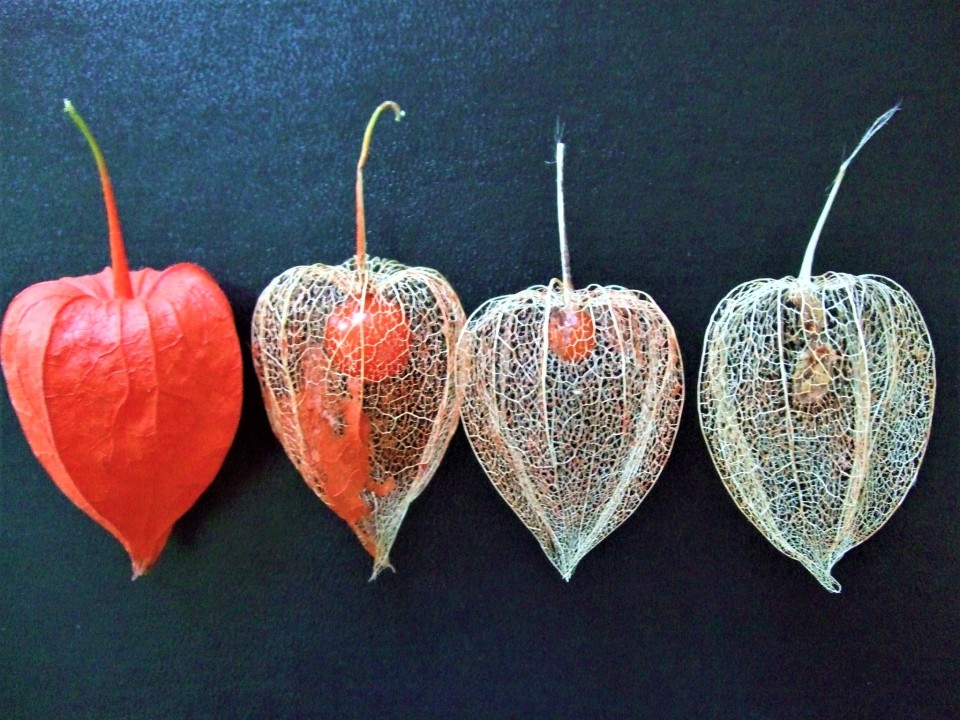
Natural Preservation in a Bladder Cherry (Physalis alkekengi)
Physalis or ground cherry is the member of the family Solanaceae or nightshades including tomatoes, potatoes, eggplants, bell and chili peppers that mostly are used for food. There are about fifty species of Physalis, most of the species are sensitive to frost, but others, such as the Physalis alkekengi, Chinese- or Japanese-lanterns, tolerate severe cold when dormant in winter. So, the plant is also called winter cherry.
The origin name of Physalis is from Ancient Greek phusallis, it means bladder because of the inflated calyx. Physalis alkekengi is native to the regions covering Southern Europe to South Asia and Northeast Asia. It is a popular ornamental plant, widely cultivated in temperate regions of the world, and very hardy to below minus 20 degrees Celsius.
This plant can be invasive with its wide-spreading root system to new shoots some distance from where it was originally planted. Physalis alkekengi seed fossils are known from the Miocene from about 23 to 5 million years ago (Ma) of Siberia and the Pliocene from about 5 to 2.5 Ma of Europe. Their pollen grains have been found in early Pleistocene sediments from about 2.5 Ma to 11,700 years ago in Norfolk (East of England) and Germany.
As a natural preservation, winter cherry fruit and seeds are inside “the cage” of calyx or sepals of a flower. It is a brilliant strategy of the plant to preserve the seeds during the winter, until the inflated calyx will open naturally in spring.
No wonder in later life Charles R. Darwin said he wished he had called his theory natural preservation, rather than natural selection, as a driving force of evolution. Recently, Edward O. Wilson in his book The Meaning of Human Existence (2014) proposed the use of term volitional selection in order to direct human evolution. Humans are about to abandon natural selection, the process that created us, in order to direct our own evolution (volitional evolution).
Every stage of natural preservation may have different meanings: bright red calyx as a warning color, early decomposition of the skin to show-off the best taste of the fruit, clean-up the vein for the purity, and finally seeds maturity/fertility for the next generation. All parts of the plant from the root, stems, leaves, and petals are poisonous, only the fruit is edible and healthy. That is why medicine is often made.
The taste of the ripe bladder cherry fruit, especially the seed, is bitter like the gall bladder of animals. According to Eastern culture, bitterness is associated with bold behaviour, prominent or outstanding.
The traditional use of the dried fruit of Physalis alkekengi is called the golden flower in the Unani or Greek system of medicine. It is a Perso-Arabic traditional medicine as practiced in Muslim culture in South Asia and in modern day Central Asia. It can be used as diuretic, antiseptic, liver corrective, and sedative.
Like the other species members in the genus Physalis, the chemical constituents of the winter cherry contain a wide variety of physalins, a steroid is a biological active of organic compounds. Physalins can be isolated from plants and have antibacterial and antiprotozoal agents.
The photo of bladder cherries above is taken by the author. Permission is needed for the publication.